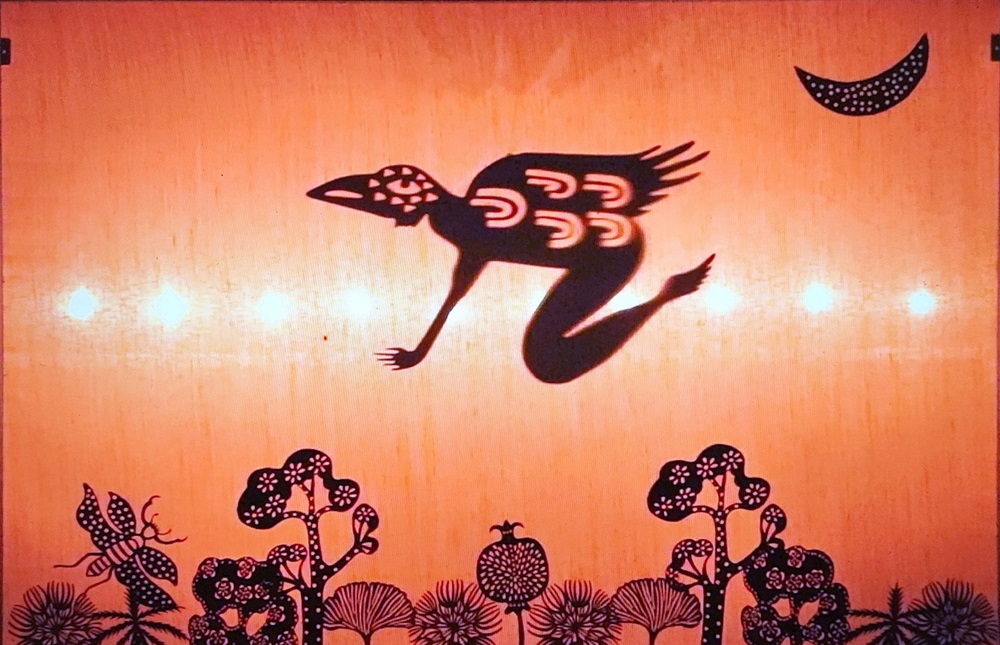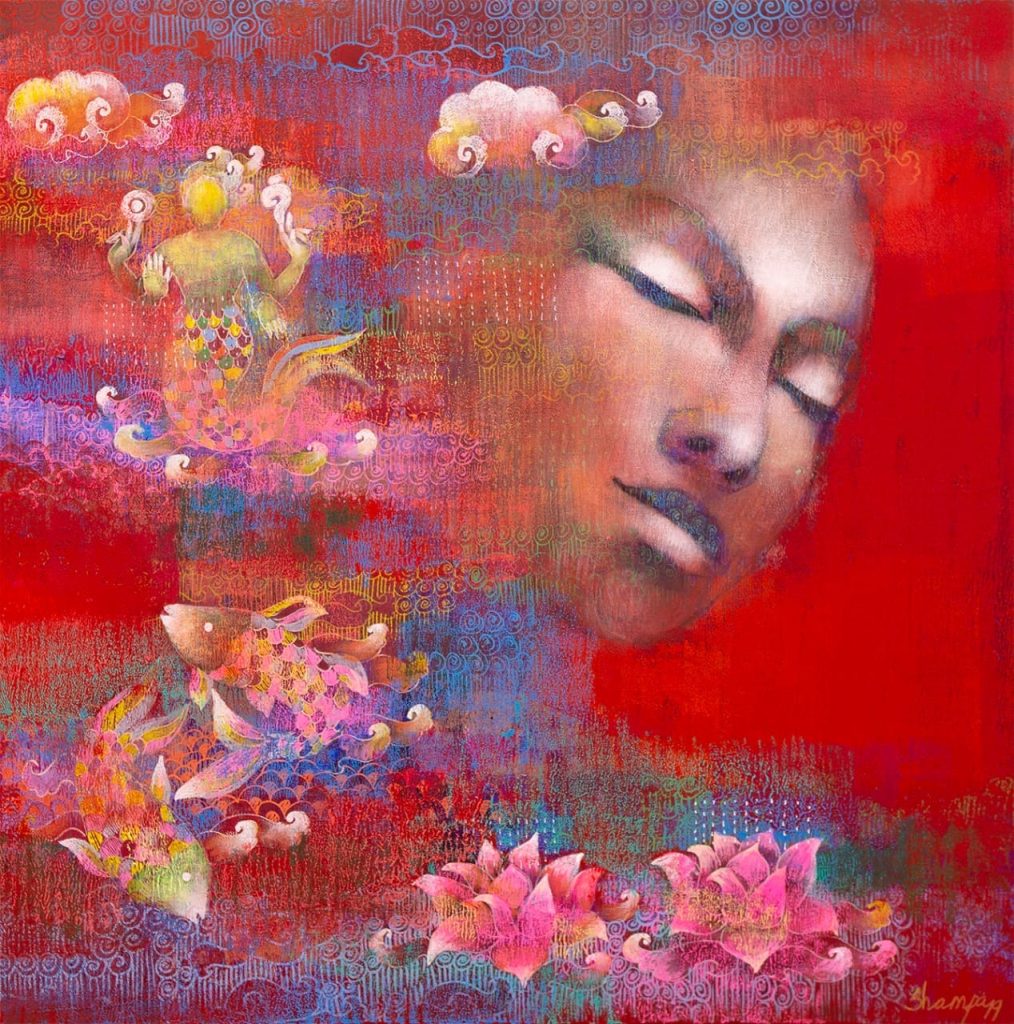Threshold Gallery is showcasing ‘Immortal Tales, Fantastical Fables,’ a solo exhibition by Debjani Bhardwaj at Threshold Art Gallery, New Delhi, from March 18 To April 18. Drawing inspiration from the animal characters of the Panchatantra and the mythical human-animal hybrids found in Arabian folklore, this exhibition brings to life creatures that possess the power of human speech and thought.
These beings partake in dark plots and vengeful acts akin to humans while also mirroring the inherent traits of their animal counterparts in nature. The exhibition portrays foxes as embodiments of slyness, deer as symbols of beauty, innocence, and vulnerability, and crocodiles as hidden dangers in seemingly peaceful environments.
Debjani successfully creates fantasy worlds that evoke her audience’s curiosity, imagination, and wonder as they look into these small windows containing three-dimensional stories. Her miniature tunnel books based on scenes from the Panchatantra tales depict stories rich with vivid imagery and moral lessons, bringing the timeless stories of the Panchatantra to life in a visually stunning and immersive format. She also brings the timeless tales of Arabian folklore to life in a visually stunning and interactive format, which serves as a window into a magical world of perspective and illusion, inviting viewers to embark on a journey of discovery and imagination.
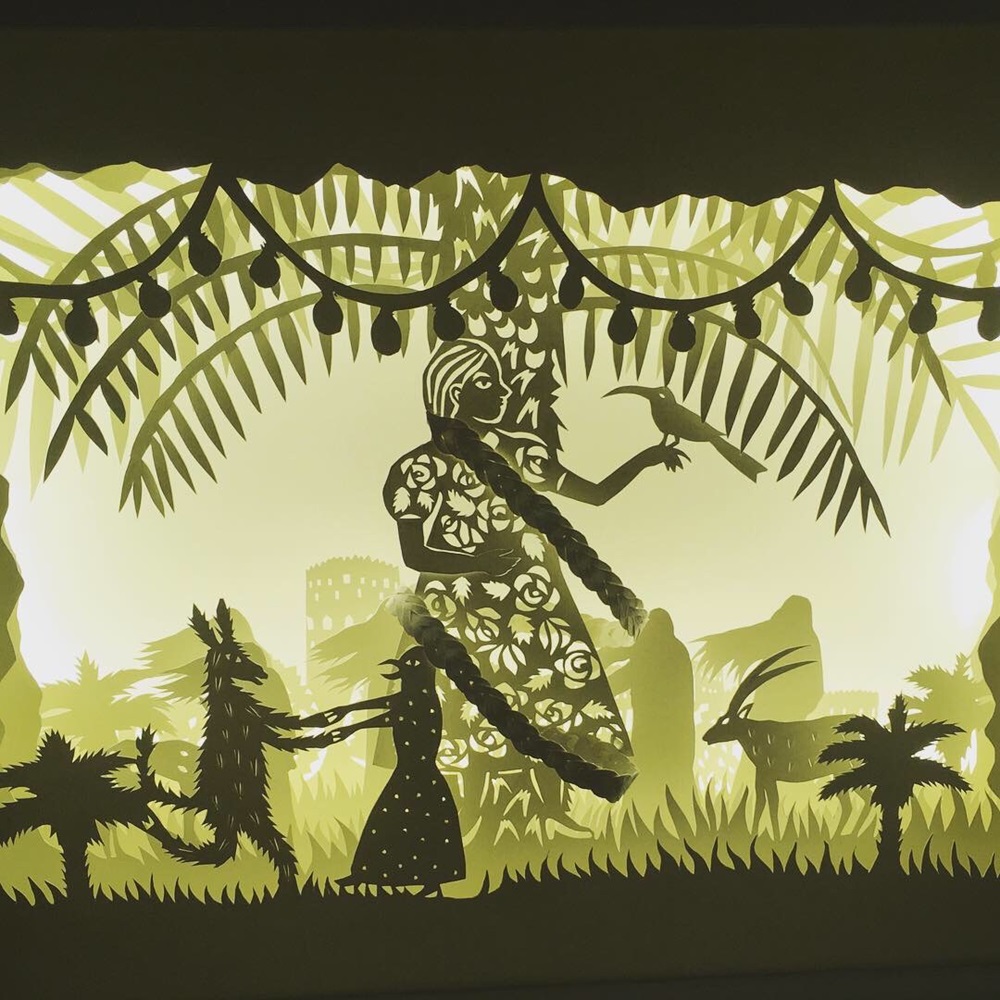
A mesmerizing and evocative shadow puppet film celebrates the harmony between humans, animals, and the natural world, inspired by the ancient practice of animal-centric yoga asanas. Her interactive shadow puppet installation celebrates the rich tradition of Arab folklore and invites audiences to explore the mythical world of Jinn characters through storytelling.
Debjani’s chosen materials, whether paper, clay or glass domes, are treated as mortal entities with their intentions and limitations, adding a delicate balance of control and chance to her artistic process. The fragility and intricacy of her work evoke both tenderness and unease, drawing viewers in with their beauty while subtly unsettling them, akin to a dream from which one cannot awaken. She invites viewers into intimate spaces to engage in playful exploration, prompting a sense of discomfort that lingers, inviting deeper reflection on the narratives and realities she presents.
Debjani Bhardwaj’s unique approach to storytelling and visual expression leaves an indelible impression, challenging perceptions and inviting viewers to question the world around them. Her artistic journey is a testament to the power of storytelling, imagination, and exploration infused with ambiguity that opens the audience’s mind and imagination to their interpretation and fantasy.
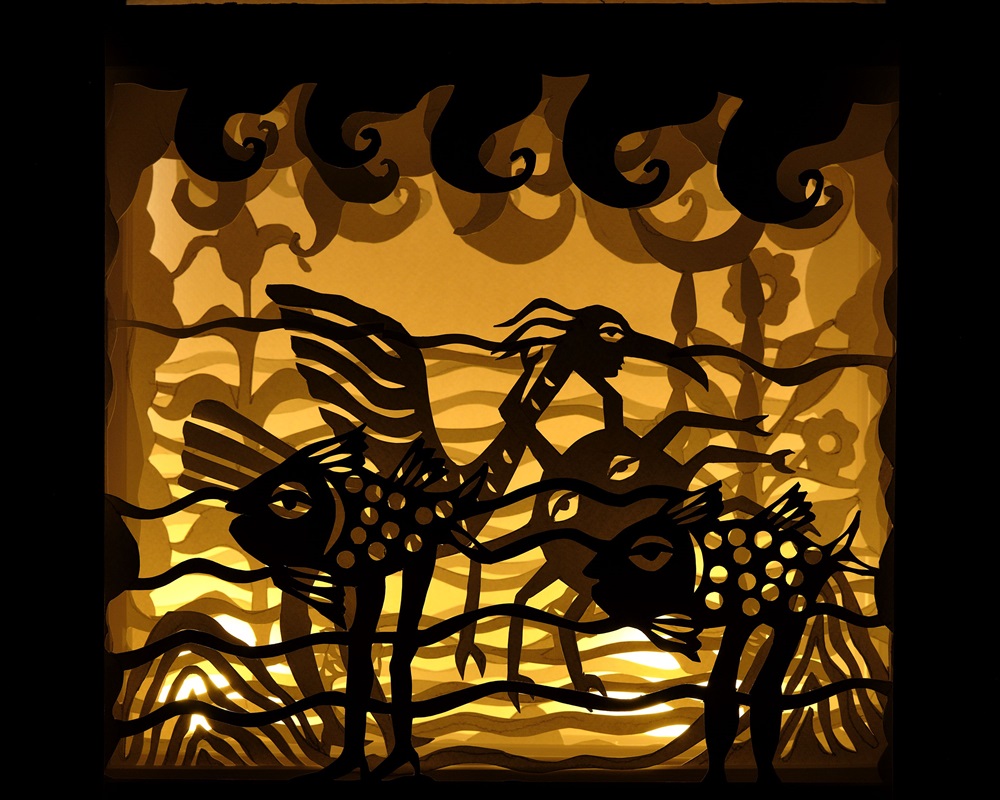
“This exhibition helped me delve into wise, pithy and ancient tales and taught me some essential life lessons. Each story unravels into several more; they are nested inside one another like Matryoshka dolls, which is why I have used layered tunnel books to explore them.” Artist, Debjani Bhardwaj.
Tunnel Books: Arabian folktales
Referencing traditional folk tales from the Arabian Gulf, the works present fleeting moments from these iconic tales like ‘The Palm Tree Bride’, ‘Halimah and the Snake’, ‘Salamah and her Daughters and Umm Al Duwais’. My familiar yet uncanny, non-linear stories resemble illustrations from children’s storybooks but are visually seductive, inviting the viewer to look beyond the surface and read between the lines. We should see a reflection of ourselves, a sublimation of these moral tales – the warnings, the rights, the wrongs, the pleasures, the pains, the obvious and the ambiguous – all on one platform. My stories shift and are malleable, offering multiple readings according to the viewer’s subconscious mind. These stories are presented in the form of tunnel books. Tunnel books originated in the 18th century and resemble theatrical stage sets. The audience is invited into the works through a peephole, creating an Alice in Wonderland feel and an element of surprise. I was inspired by the stereoscopic toy I played with as a child called the ‘Viewmaster’ which transported me into 3D magical worlds of perspective and illusion.
Miniature Panchatantra Tunnel Books
This is a series of miniature tunnel books. Tunnel books are cut-paper panels placed one behind the other, creating the illusion of depth and perspective. The books are engineered like collapsible accordion-folded books. Each layer of paper is cut differently to expose the layers behind or in front of it. These foldable artworks depict scenes from the Panchatantra tales featuring animals and plant life. They are displayed with a light source behind them, making the front layer stand out, and the rest look more like a shadow. I wanted to create fantasy worlds that evoke the audience’s curiosity, imagination, and wonder as they look into these small windows containing three-dimensional stories. I chose those scenes from 8 stories that left a lasting impression on me.
Of Fables and Fairy Stories
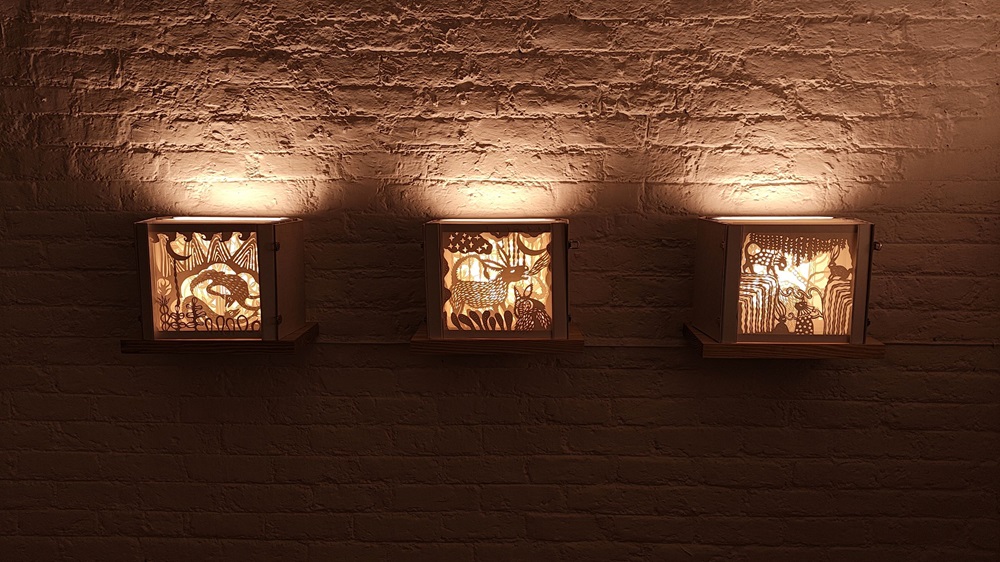
There is much more to each individual than what meets the eye. We contain many opposing elements, which make us complete. For instance, we include both male and female, the predatory, the vulnerable, the spiritual and material, the intuitive and the calculative. We are not one or the other; we are both; we are a dichotomy. These works transform from human to animal and from conscious to unconscious, and they tell open-ended imaginary stories that the viewer has to complete.
Tunnel Books Inside Glass Domes
A series of Panchatantra tales place layers of hand-cut paper inside miniature glass domes; the viewers can slowly move around these artworks to view the stories from various angles and notice the characters and elements in each dome, lending the audience a certain degree of control of the narrative.
Shadow Puppet Film “Forest Hymn”
Ancient yogis dedicated enormous time and energy to observing the natural world; they could see part of themselves inside each being. These practitioners were said to watch a single animal for hours daily to try and mimic their postures. They revered the natural world and were open to receiving the teachings that all creatures could bestow upon them. The ancient yogis modified or formulated an asana based on all they had learnt by observing how an animal slept, fought, ate, and expressed its emotions from fear to pain to joy. The yoga asanas named after animals have each been carefully crafted to embody what a specific animal represents, from the stealthy rise of the cobra to the stoic humility of the cow pose. From the fierce tiger to the tortoise who carries its home on its back, to the majestic strutting of a peacock to the soft-bodied firefly, yoga poses honour the lessons that animals can teach us and, in the process, learn a bit more about ourselves.
Feature image: Debjani Bhardwaj, Forest Hymn, Filmography of a shadow puppetry performance, 5 mins 22 seconds-

